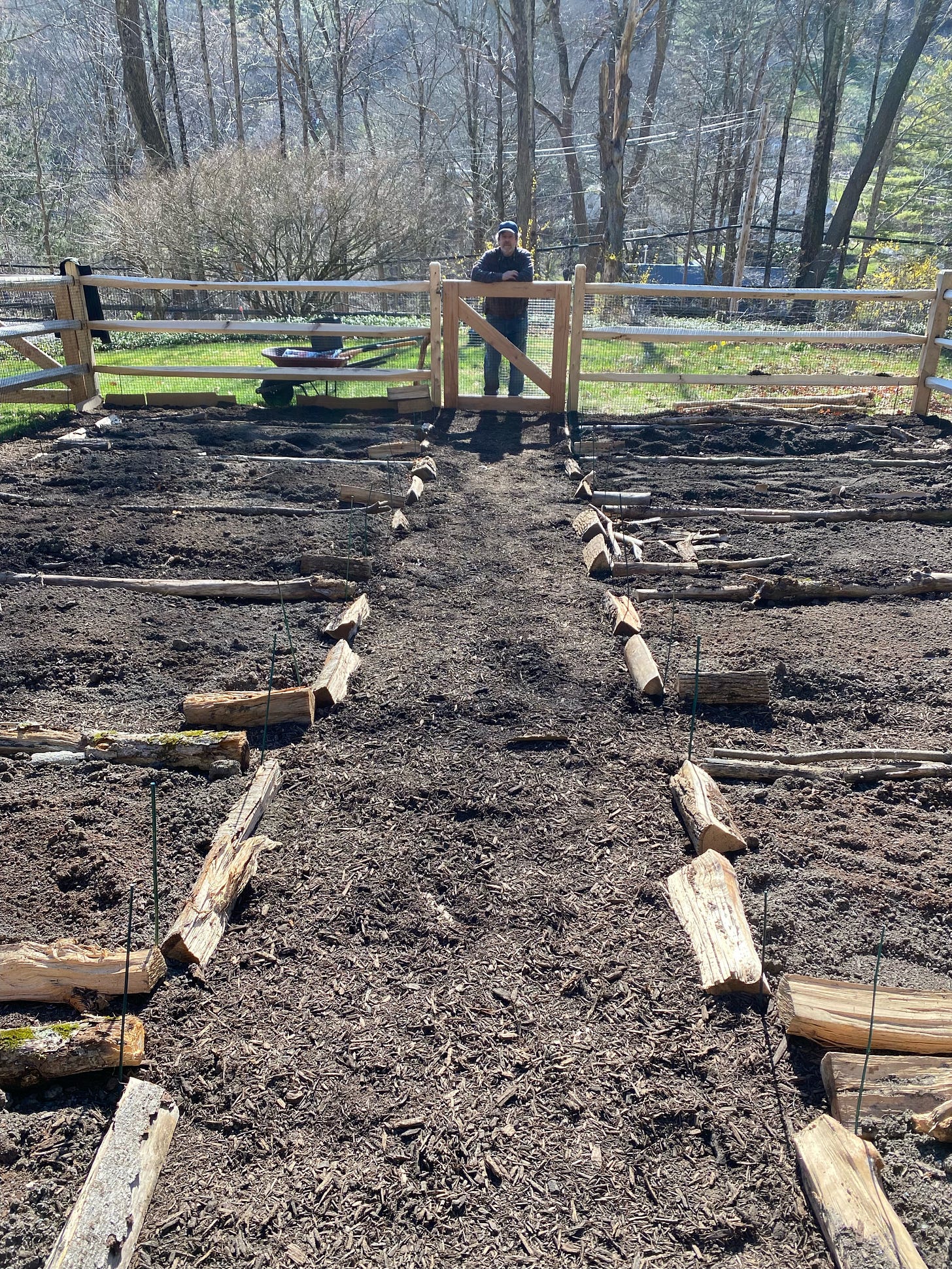It’s the opening day of March Madness but for the first time in many years I’m not watching. Don’t get me wrong. I love March Madness but now I don’t have to watch it for a living anymore.
For the past 14 years I’ve been the sports editor at The Washington Post and the first Thursday and Friday of the tournament, especially in those pre-pandemic years when we were all in the office together, were a blur of squeaking sneakers and buzzer beaters punctuated by the shouts and screams of co-workers in Sports and assorted hangers on from around the newsroom who would stop by to watch the games on TV.
Not so today. I’m a recovering journalist. I live in the Berkshires in the hills of western Massachusetts and I can look out the window onto what has been a dream of mine for decades. A true garden of my own.
I don’t come from a family of farmers. Far from it. But fruits and vegetables have been close to the center of my life for as long as I can remember. They put clothes on my back and paid for college. My father and my grandfather before him were fruit and vegetable wholesalers at the produce market on Chambers Street in lower Manhattan and later at the Hunts Point Terminal Market in the Bronx.
My dad was a golfer, not a gardener, and my mother didn’t have much interest in outdoor life. What that meant was that from the time I was old enough to shovel mulch I became the caretaker of the flower beds and lawn at our home in New Jersey. I used to spread bales of peat moss around the rose bushes each spring, which probably helped kill them. Spreading cubic yards of peat was horticulturally and, as we’ve come to learn, ecologically the wrong thing to do. But what did I know?
Not much.
Decades later I know a lot more about gardening and a lot more about life, and I hope this newsletter will help me explore how the two have become so intertwined that I can no longer see one without the other. I’m not sure where my passion for plants came from but maybe writing this will help me find out. Along the way I hope to share some of the things I’ve learned and give thanks to those who’ve taught me.
And hopefully I’ll learn from some of you as well.
In the spirit of sharing, I’ve taken up sourdough baking (again) and I’m a huge fan of these simple sourdough blueberry pancakes which I started making during the pandemic after thankfully stumbling on the recipe on the Holy Cow Vegan blog. They’re thin and tangy and unique! Here’s the link to the recipe (h/t Vaishali):
https://holycowvegan.net/vegan-sourdough-blueberry-pancakes/
Vegan Blueberry Sourdough Pancakes
Ingredients
1 cup sourdough starter (Either discard or active is fine)
2 cups whole wheat pastry flour
2 cups nondairy milk (I use almond)
1 teaspoon apple cider vinegar
2 tablespoon maple syrup or vegan cane or turbinado sugar
½ teaspoon baking soda
½ teaspoon sea salt or pink salt
2 tablespoon flaxmeal
Maple syrup for serving
2 cups blueberries
Juice of 1 lemon (optional) I like the lemony tang, but the sourdough is already tangy so you might not want to add it.
Instructions
The night before you make your pancakes, mix the nondairy milk with the vinegar and set aside for a couple of minutes to curdle.
In a large bowl, mix the nondairy milk with the sourdough starter, flour, and maple syrup or sugar. Cover with plastic wrap and keep it in a warm place (like an unheated oven with the light turned on) overnight.
By morning, your pancake batter should be all puffy and bubbly and it should have risen. Mix in the salt, baking soda, flaxmeal, blueberries, and lemon juice, if using.
Heat a griddle and coat with cooking spray. Pour the batter on the griddle using a ¼ cup measure for each pancake.
Cook until the sides are dry and bubbles appear in the center, then flip and continue to cook on the other side until set.
Serve hot with maple syrup and fresh blueberries, if desired.




